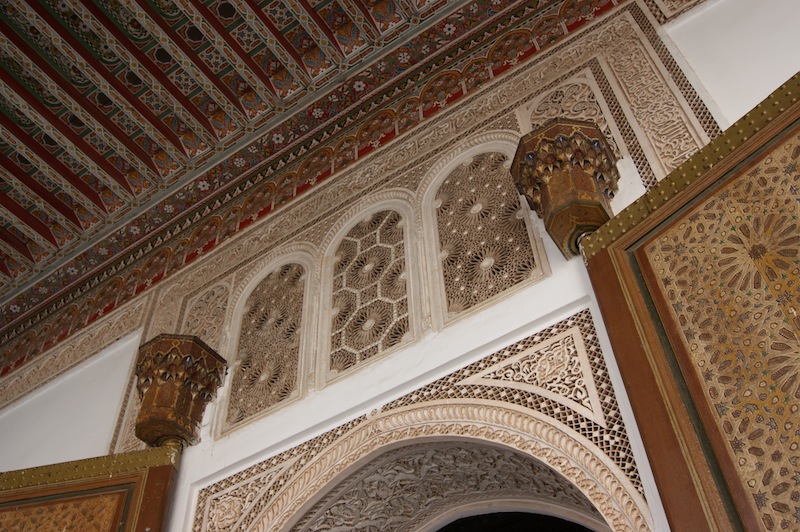The call to prayer is one of the essential sounds of a stay in an Islamic country, and the first one of the day came at 5.30am or thereabouts.
Some may find it annoying and curse the interruption of sleep, especially at the crack of dawn, but I’ve always found it romantic, reassuring and exotic.
At that time of day, the streets were already busy with donkeys and motorbikes but, in a room that was pitch black, I fell back to sleep courtesy of my cold medications and alcohol.
With temperatures predicted to be in the mid-30s, we wanted to be out early so we breakfasted promptly at 8.30am, treated to yoghurt, fruit, bread and cake, with freshly squeezed orange juice and coffee.
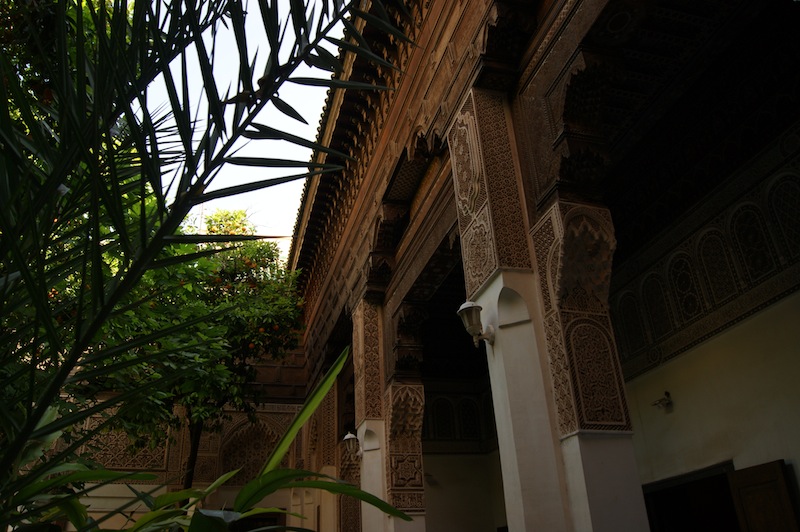
As we headed out there were things I was dreading about Marrakech and the most obvious was the pestering inflicted on tourists by unofficial guides and tradesmen, the various scams and cons. Having endured them in Luxor, Egypt, a few years back, I feared they would dent my enjoyment so I had my guard up and my pester alarm poised.
With few pavements, though, our first hurdle proved to be dodging the endless stream of motorbikes, cars and donkeys, kicking up dust and spilling out fumes, as we weaved our way through the squat buildings and pink walls of the old city. Marrakech was proving to be a shock for one used to the manicured streets of London. It looked run down, decayed and dirty, in places desperately poor. Yet amid the grime was real life and beautiful architectural touches – doors and surrounds of exquisitely carved wood, balconies of intricate metalwork.
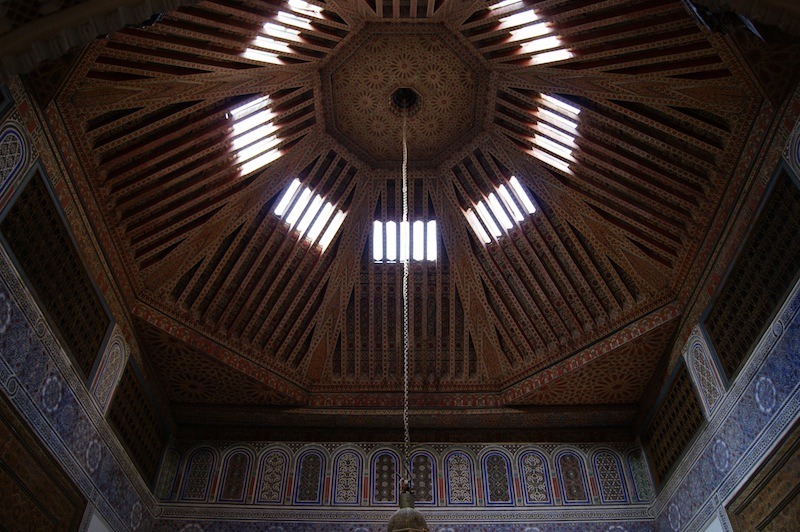
Covered in factor 15 sun tan cream and dosed up with more Sudafed against my cold, we gripped our Lonely Planet and walked to the Bahia Palace not far from our riad. It didn’t look much from the outside but the interiors, created in the late 19th century, were the epitome of the craftsman’s art. While the colourful tiling and courtyards were impressive, the wooden ceilings really dazzled – carved, ornate, richly decorated. But I was rather taken aback by the number of tourists out and about…
We ventured deeper into the medina, to the Dar Si Said. Now the Museum of Moroccan Arts, there wasn’t a huge amount on show to grab my attention – but the architecture did. As lush as the Bahia Palace, the wedding chamber dome was perhaps even more spectacular than its rival. Along with the amazing woodwork, I spotted carved stone and plaster.
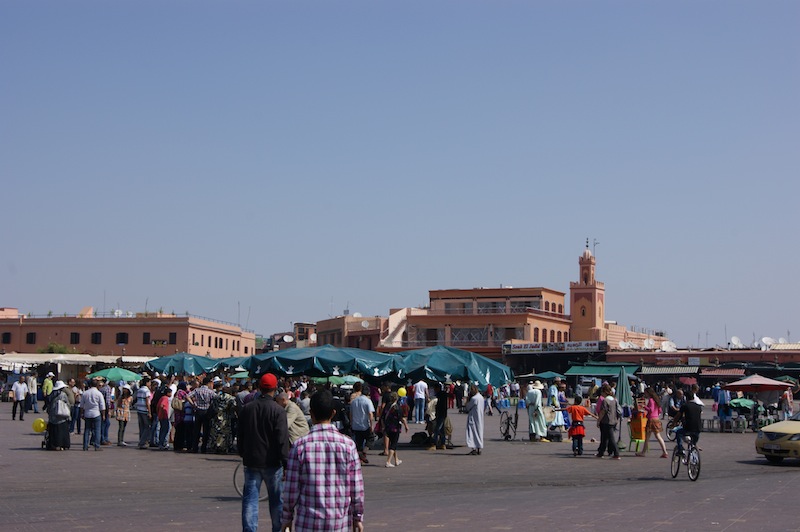
Walking on, we came to the beating heart of Marrakech, the Djemaa el-Fna – the massive public square filled with traders and caterers, traffic, dust and noise. It will never win awards for beauty, but all life was there. Surprisingly, though, my fears of being pestered to death were rapidly diminishing. Even as we headed north into the narrower streets of the ancient part of town and the souqs, everyone seemed to be on their best behaviour. Rather than fearing the city, I found myself relaxing into it. I didn’t feel threatened at all, not even when we found ourselves hopelessly lost, two of only a few pale European faces to be seen.
The souqs were bonkers, thankfully shaded from the heat and a hive of industry. One minute it was metalwork, the next we were in an area where leather workers went about their trade. And a lot of their work looked very good indeed.

We, though, found ourselves in the Museum of Marrakech, once known as the Mnebhi Palace. There wasn’t much about the city’s story to see, but the enclosed inner courtyard was a pleasant surprise. Bathed in a subtle yellow light and with incredible tiling, the centrepiece was a giant metal chandelier, easily the biggest I’ve ever seen.
Nearby was the Ali ben Youssef Medersa – a religious school founded in the 14th century and another riot of architectural creativity. Intricately carved wood and plaster, breathtakingly good tiling plus light-filled courtyards were again on the agenda, along with gloomy and claustrophobic cells where the students lived and studied. The central courtyard, bathed in light reflecting fiercely off the white marble floor, was a real sun trap, overlooked by little windows from the first floor cells. It really was a magical place, even if busy with tourists.
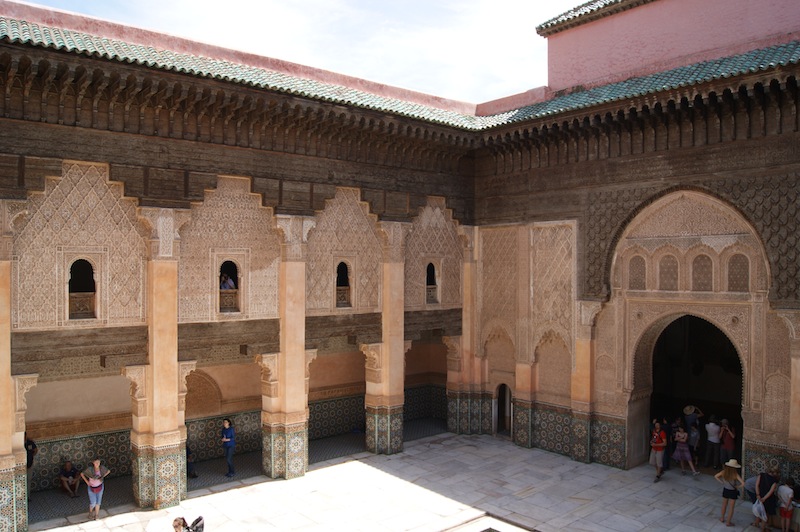
And that was just one morning. In the heat of lunchtime, we wound our way through the medina’s narrow streets, lost, dodging the fearless motorcyclists and flea-bitten mules and donkeys. We eventually found somewhere to grab a bite to eat, although Graham voiced his usual concerns about hygiene and the pink tinge to his kebab. Mine was fine but my taste buds were dead, the result of my cold. I might as well have been eating cardboard.
In the early afternoon we walked back to the riad and chilled out by the pool, nicely shaded and oh so peaceful. It was the perfect contrast to the noise and chaos of the medina’s insane streets.
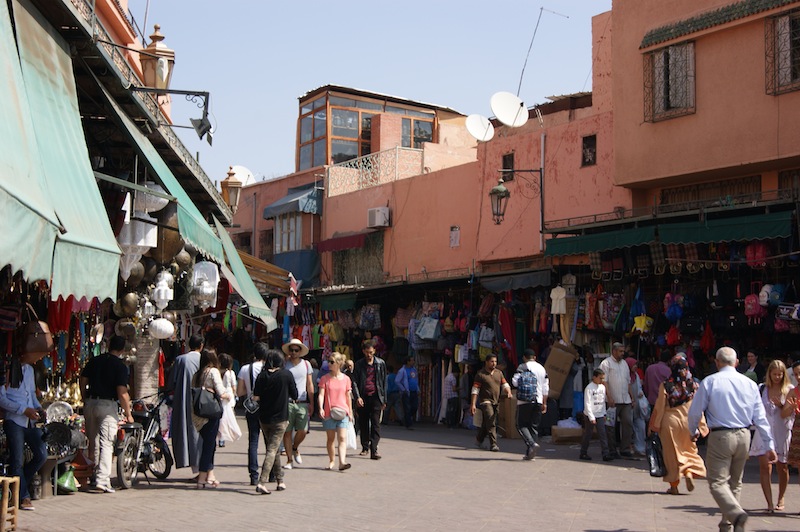
The chaos returned come evening as we went out to eat, discovering huge crowds converging on the Djemaa el-Fna as the sun set and cast the buildings in a rich bronze. It seemed like the entire population of Marrakech, tourists included, had come out for the evening.
We ate at Dar Mimoun, hidden away in one of the souqs. Another remarkable building, it had a cool courtyard filled with citrus trees and ceilings decorated like the palaces we’d seen earlier. No booze sadly but we tucked into tajines and struggled to converse with our pleasant waitress.
Moving on, we found Kosybar – one of the few places we could get an alcoholic drink in the city. In a characterful building not far from our riad and looking out on a tatty public square, it was full of westerners cooling off in the late evening breeze.
The service was pretty chaotic. An Arab-Canadian guy crooned his way through a set of classics. And we drank Casablancas.

